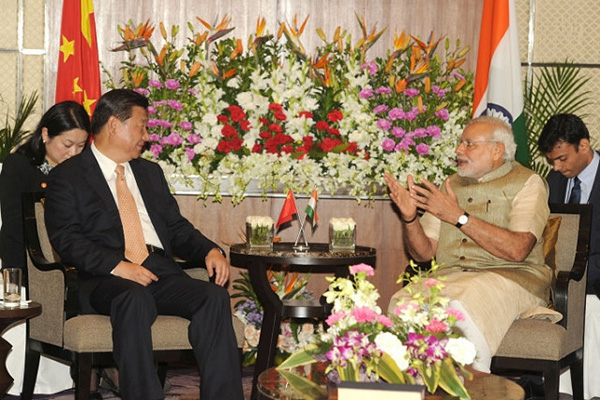The dawn of the 21st century has seen a re-balancing of the international playing field from the Atlantic to the Pacific due to the swift emergence of China and the hegemonic position of the US since the collapse of the Soviet Union. In this context, the Asia-Pacific region began to attract increasing attention within the foreign policies of most states. Spain was no exception and in 2000 it approved an Asia-Pacific Framework Plan.
Since then, the rise of the two Asian giants, China and India, has been such that the term ‘Asia-Pacific’ has quickly become obsolete, the expression ‘Indo-Pacific space’ now being favoured. This latter concept expresses more precisely both China’s growing area of influence and India’s greater role in the region’s affairs.
“European diplomacy must support regional initiatives that are inclusive, favour cooperation and are governed by international norms and standards”.
The substantial increase in the presence of China and its military activities beyond the boundaries of the Western Pacific have given rise to concern in several countries, including India. The latter is not only one of the countries to be most concerned by China’s growing presence in the Indian Ocean but it is also one of those to have experienced the most significant boost in its economic and military capabilities. More than a decade ago, the increase in India’s national power led the US and Japan cultivate Delhi as a counterweight to Beijing. This became clear in 2005 with the entry of India, Australia and New Zealand as founding partners of the East Asia Summits and in 2007 with the launch of the Quadrilateral Security Dialogue between the US, Japan, Australia and India. The Japanese Prime Minister, Shinzo Abe, was especially emphatic in his August 2007 speech to the Indian parliament on the confluence of the Indian and Pacific Oceans. However, the changes of government in Japan and Australia quickly put an end to this grouping of Indo/Pacific democracies.
In such a context, which is also marked by the international financial crisis, more and more voices began to be heard in China advocating the replacement of the ongoing low-profile foreign policy, adopted by Deng Xiaoping at the end of the Cold War, by a more proactive and assertive one, which better reflects the spectacular growth of Chinese national power over the past two decades. With the coming to power of Xi Jinping, those who believe the time has come for China to regain a central role in the international arena have won the day.
The Belt and Road Initiative, previously known as One Belt, One Road, is the signature foreign policy project of Xi Jinping. The strategy covers 65 countries, accounting for around 60% of the world’s population and half its GDP, and can have an immense potential impact, especially on the Eurasian continent. The initiative was presented in 2013 and focuses on the economic dimension, promoting connectivity and cooperation between the countries involved. Especially positive is its emphasis on sectors such as energy and transport, which are significant bottlenecks for many developing countries.
Nevertheless, the Belt and Road Initiative also has substantial strategic repercussions, since it favours both relations of asymmetric economic interdependence between China and the other participating countries and also the image of Beijing as a normative power. Moreover, in parallel to these cooperative mechanisms, supported by large investments and loans and the creation of institutions such as the Asian Infrastructure Investment Bank, Beijing has also shown a greater assertiveness in the disputes with its neighbours. A good example are the naval and air incursions in areas disputed with Japan in the East China Sea, the construction of artificial islands in the South China Sea and the area’s greater militarisation.
China’s growing assertiveness –coupled with a certain ideological alignment between the governments of the US, Japan, India and Australia– has allowed the revival of greater strategic coordination between these likeminded countries. This materialised in November 2017 in the revitalisation of the Quadrilateral Security Dialogue and in the support provided by Narendra Modi and Donald Trump to the Free and Open Indo-Pacific Strategy promoted by the Abe administration since November 2016. The strategy is based on three pillars: (1) freedom of navigation and the rule of law; (2) economic prosperity through improved connectivity thanks to quality infrastructures developed through internationally accepted standards; and (3) the commitment to peace and stability.
“The Free and Open Indo-Pacific Strategy could be an excellent platform for such a purpose as long as it is not implemented merely as an instrument to contain China”.
On paper, the Free and Open Indo-Pacific Strategy fits perfectly with the values and interests of the EU’s foreign policy, given its emphasis on a rules-based international order and the fight against threats such as piracy, terrorism, the proliferation of weapons of mass destruction and illegal fishing. In addition, thanks to its open and inclusive nature, based on respect for International Law, the strategy could influence China to renounce unilateral changes to the status quo in the area that endanger regional stability and to carry out its initiatives according to internationally-recognised norms and standards such as the United Nations Convention on the Law of the Sea and the Principles of Corporate Governance of the OECD and the G20. In this way, and with more transparent processes for granting financing, the Belt and Road Initiative could be a magnificent platform for international cooperation and could contribute more effectively to the socio-economic development of the participating countries.
However, it will be critical to see how the Free and Open Indo-Pacific Strategy is actually implemented and whether what prevails are inclusive visions, based on adherence to internationally-accepted norms and standards, or confrontation, prioritising the perpetuation of certain power balances and the region’s polarisation. The National Security Strategy recently issued by the Trump Administration is not especially encouraging as it defines the Indo-Pacific region as an area where geo-strategic competition between free and repressive visions of the international order is taking place.
European diplomacy must support regional initiatives that are inclusive, favour cooperation and are governed by international norms and standards. The Free and Open Indo-Pacific Strategy could be an excellent platform for such a purpose as long as it is not implemented merely as an instrument to contain China.



